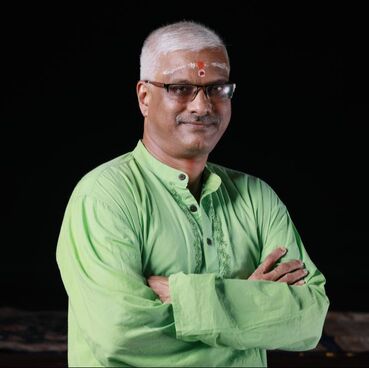Carnatic Violin
Classes
What is Carnatic Violin?
Around 1790, the violin was introduced in India. It was adapted to Carnatic music by Baluswami Dikshitar, brother of the famous composer Muthuswami Dikshitar. Over the course of time, it became an integral part of the concerts as the violin is best suited to the unfettered gliding and wavering gamakas that characterise the Carnatic ragas. A violinist must also develop acute 'listening' skills as often he has to play without a music sheet, by just following the vocalist.
The Carnatic violin is played sitting cross-legged, the instrument pointing to the ground with the scroll resting firmly on the ankle of the player's right foot. This allows the left hand to slide freely up and down the neck. The aim of tone production in violin is to imitate the Carnatic vocal style.
The Carnatic violin is played sitting cross-legged, the instrument pointing to the ground with the scroll resting firmly on the ankle of the player's right foot. This allows the left hand to slide freely up and down the neck. The aim of tone production in violin is to imitate the Carnatic vocal style.
Begin Your Journey Today
Want to enrol in SIFAS? Become a member and register as a student.
Contact UsSingapore Indian Fine Arts Society
2A Starlight Road, Singapore 217755 TEL: +65 6299 5929 FAX: +65 6295 1238 Media and partnership contact details: [email protected] |
Begin Your Journey TodayWant to enrol in SIFAS? Begin your classes as soon as the start of next month! Become a member and register as a student: |
Find UsInformation is correct at the time of publication.
Copyright of SIFAS 2023. |


